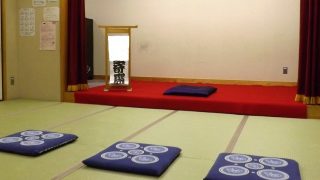About Hogaku (邦楽-traditional Japanese music)
Hogaku (traditional Japanese music) refers to the ancient Japanese music that developed in the early modern era, such as the Shakuhachi, Shamisen, and Koto. It was widely popular as a practice for ordinary people in the old days.
The Shakuhachi is a musical instrument that produces sound from the air that comes out of its mouth and is classified in the same way as the flute.
The beginning of Shakuhachi (尺八)
The Shakuhachi was introduced to Japan from the Tang (唐) Dynasty in China as an instrument for court music in the Nara period. The Shakuhachi of those days is still in the Shosoin temple (正倉院) in Nara. The name’s origin comes from the standard length being 1 shaku-8(hachi)-sun (about 55 cm).
When it was first introduced to Japan, it was used as a traditional Japanese court music instrument, but by the Heian period (794-1185), it had fallen out of use for a while.
There are several types of Shakuhachi, and the one that remains today is the Fuke Shakuhachi. Only the Komuso (虚無僧) monks of the Fuke sect were allowed to blow, but teaching people in general was widely practiced.
In the middle of the Edo period, Kinko Kurosawa reorganized and arranged about thirty pieces of music passed down from the Komuso (虚無僧) temple in various parts of Japan (later called Kinko-ryu Honkyoku). He became the founder of the Kinko-ryu.
Tozan-ryu (都山流) and Kinko-ryu (琴古流) are now the two major styles of Shakuhachi.
About Shakuhachi
The Shakuhachi is cut from the bamboo’s root, hollowed out, and smoothed out on the inside. It can be disassembled into two pieces at the middle part. There is a water buffalo horn on the nozzle. It’s also a difficult instrument for beginners to make a sound on.
The Shakuhachi was only allowed to be played by Komuso, a monk of the Fuke sect (a sect of the Zen) during the Edo period. There is even a theory that Komuso was an undercover member of the shogunate because he was granted a free pass to the checking spot of county-to-county “because it was for training” and he did not have to take off his hat to show his face.
・Komuso

The current use of Shakuhachi
The “Shakuhachi” is breathed in, its tone and its aftertaste savored by both the player and the audience.
The scenery of the performance, which respects the original tone of the bamboo, is closer to the practice than the playing and has been handed down even today.
Nowadays, due to the emergence of excellent players and innovations in modern sound technology, it is used not only for Koto and Shamisen ensembles but also for orchestras and some J-POP groups.
We can’t wait to see how the Shakuhachi will evolve further while inheriting the traditional Japanese tone.













